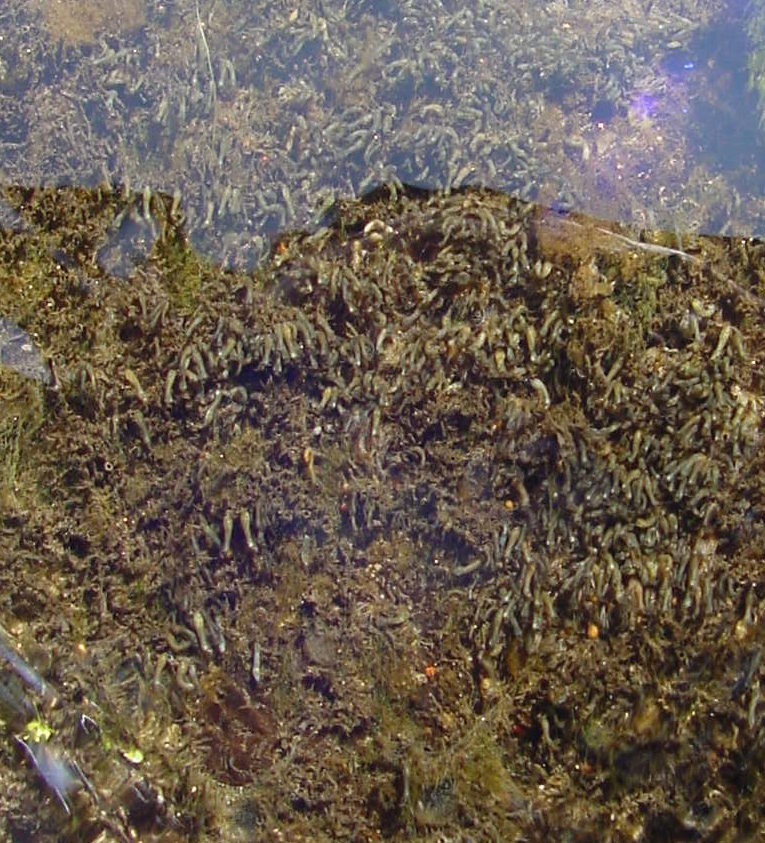Habitat
So where in the world can you find Onchocerca volvulus?
Onchocerca volvulus’ habitat originated in West Africa in
1977 and is primarily found there because of its tropical
rainforest geographical features. This is one of the two strains
of this parasite. The other strain is commonly found in the
savannas of Central and South America and Yemen as well.This
parasite was later brought to America by African slaves. These
two strains are distinguished by a DNA test called Polymerase
Chain Reaction, or PCR test. Onchocerca volvulus is known to
cause a disease commonly called “river blindness” because it can
cause severe blindness that can affect people all throughout the
world. It is also referred to as the “river blindness” because
it the disease is transmitted by a black fly that tends to live
near rivers.

To survive, the black fly needs lots of oxygen from the
fast water provided by the river where it usually feeds during the
day (Globisch 2013). Adult females are considered to be blood
feeders that often feast on birds and mammals, including humans.
Because the flies bite during the day, one way to prevent
getting infected by Onchocerca volvulus is by wearing long
sleeved shirts and pants to avoid getting bit by the bugs while
in areas they are likely to be. In heavy areas of black flies,
there is a chemical that can be sprayed so that they do not
bother humans as much. Adult black flies need to live by rapid
water because they use the water as a device for feeding off of
organic matter found in rivers (EcoSpark 2011).
The parasite, Onchocerca volvulus is transmitted by black flies
which most commonly bite into humans, and disburse larvae under
the skin of a human. When the larvae is dead, it can result in
skin atrophy as well as inflammation in the eyes which can lead
to reduced vision and even blindness (Alberts et al. 2012). In
humans, the adult parasites are often found in groups of knotted
up balls in
subcutaneous tissues. These groups then mature into
worms and later become enclosed in fibrous tissue (Dalton 2001).
These worms then feed on blood or bodily fluids from the host,
whether it be a human or other animal.
In response to the parasite, the human body reacts in different
ways depending on the location of where the black fly feasts on
the body. Most cases of transmission of this parasite happen in
rural areas. People who are short- term visitors to places, such
as Africa, are at a higher risk for getting bitten and infected
by a black fly because long-term people who live there are
better exposed to blackfly bites. Infections which occur in
Africa often result in bumps on the skin in places such as the
knees and pelvic areas, while infections that occur in Central
America often result in bumps on the skin in places such as the
neck and head. These bumps occur in different places because of
the preference of the black flies bite which is dependent on
where the black fly is from (Dalton 2012). Even though the fly will
most commonly bite either of those areas, this parasite can also
travel all over the human body and often enter through the eye
of the human, similar to
Gasterophilus intestinalis which also causes eye
complications in humans.
If a blackfly that is uninfected bites a person who has the
parasite already in their body, the blackfly will then be a
carrier of the parasite. It then takes the larvae of the
Onchocerca volvulus to develop in the fly for it then to be
infectious to humans again in the new, infected fly
(Onchocerciasis FAQ 2013).

Though the parasites' lifespan is around 10 years, and the Onchocerca
volvulus can reproduce at astronomical rates. The parasite
produces mass amounts of eggs and larva simply because they
often do not find a host to feed off of before they die. The
environment that they live in is crucial for the survival
because of the hosts that are needed. The most popular regions
are tropical and terrestrial because of their rivers, but are
not limited to that because they can also be found in savannas,
wetlands, or grasslands.
Continue to the Form and Function Page to learn more!
